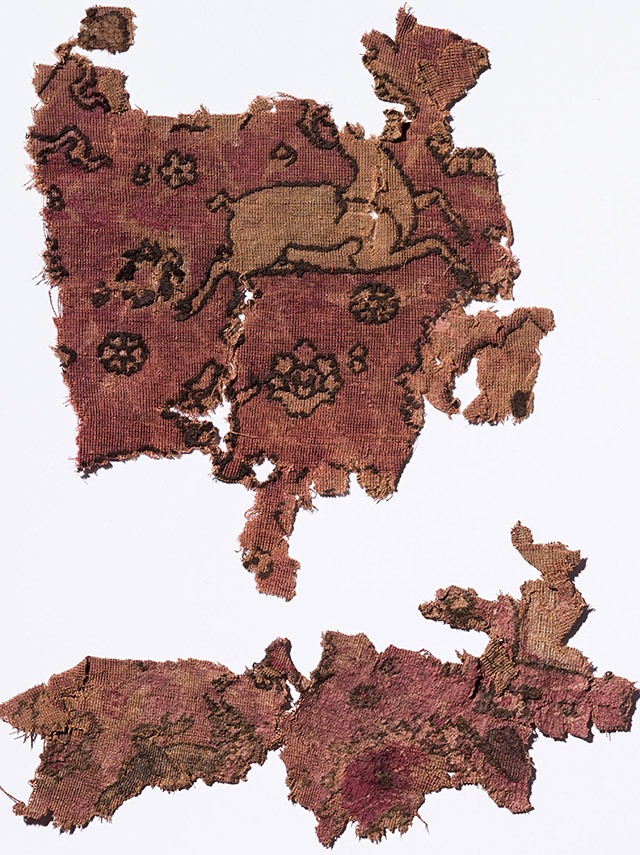
Puzzling with pieces of 350 year-old carpet
Thirteen fragments of an oriental rug, retrieved from a seventeenth-century shipwreck lying on the seabed of the Wadden Sea. Hundreds of unique objects have been found in this wreck, known as the Palmwood Wreck, including this exclusive rug.
Knotting
Only thirteen fragments of this once so beautiful rug have been preserved. However, the asymmetrical knotting of the fabric, also known as the Persian knot, is still clearly visible. This method of knotting is typical of rugs from the vast Persian Empire, which in the seventeenth century stretched from present day Armenia up to and including Afghanistan.
Richly decorated
The rug was probably about 250cm long and 180cm wide. It is assumed that it was covered by a large dark red panel, decorated with thin, meandering vines, flowers and animals, including hunting scenes. Decorative cartouches would have adorned the border. It was most likely made at the end of the sixteenth century or at the beginning of the seventeenth. Rugs with this type of detail usually originate from the north and east of the Persian Empire, from present day Iran and Afghanistan.
Table covering
Rugs decorated with exotic scenery were very popular during the 17th century. It is known from 17th century paintings that a rug was usually used as a table covering.
On display
The rug and other unique finds from the Palmwood wreck are on display in a new, spectacular exhibition.
NB: Research continues to be conducted into the collection. For this reason, this article may contain obsolete information or outdated insights.

